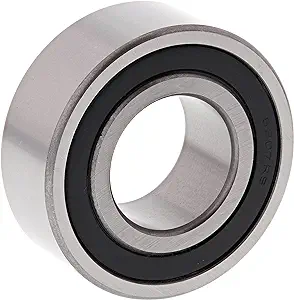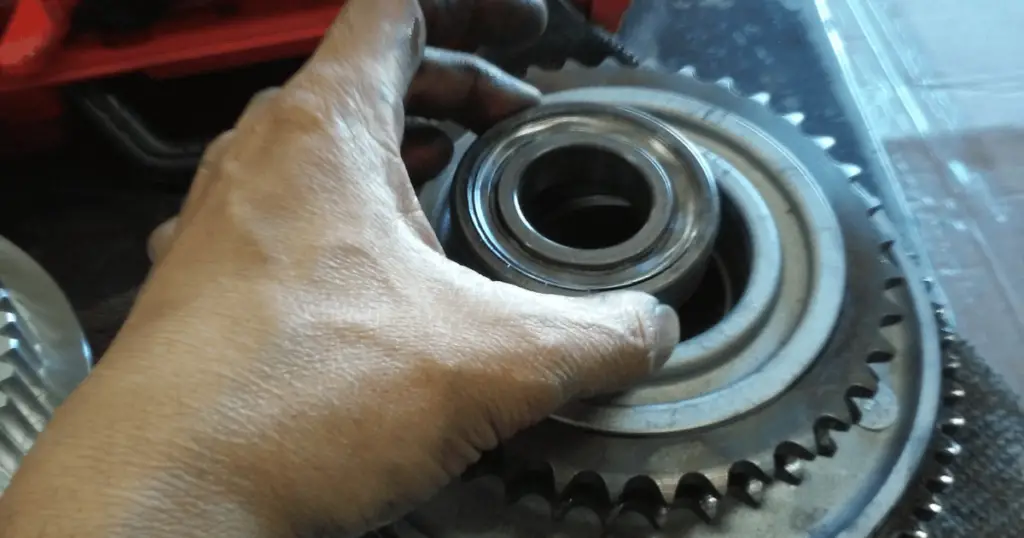A common issue faced by Harley riders is the wear and tear of the clutch hub bearing. This critical component of your bike can create a multitude of problems if not maintained properly. In this in-depth guide, we will uncover the notorious Harley clutch hub bearing symptoms, discuss how it functions, and walk you through the steps for a successful Harley transmission noise fix. So let’s get to it!
So, How Does A Clutch Hub Bearing Work?

The clutch hub bearing is a crucial component in the operation of your motorcycle. This bearing is designed to reduce friction between the clutch hub and the clutch shell, allowing them to rotate at different speeds when the clutch is disengaged. In simple terms, it ensures that the power from your engine can be smoothly transferred to your bike’s wheels.
How Does It Wear Out Over Time?
Like any mechanical component, the clutch hub bearing is subject to wear and tear. Over time, the constant pressure and friction can lead to the deterioration of the bearing. Factors such as inadequate lubrication, extreme riding conditions, and poor maintenance can accelerate this process.
Related: Harley Davidson Clutch Replacement Cost: Complete Overview
What Are The Usual Harley Clutch Hub Bearing Symptoms?
Amongst the symptoms we’ll cover below, here’s a video for you to get a good idea of what the (usual) symptoms sound like.
Constant Growling or Grumbling
One of the earliest signs of a failing clutch hub bearing is a constant growling or grumbling noise emanating from the primary cover area. This noise is most noticeable when the engine is idling or operating at low RPMs.
Clunking Noises
Clunking noises are another common symptom of a faulty clutch hub bearing. This sound is typically heard when the clutch is engaged or disengaged, indicating a possible issue with the bearing or the clutch assembly.
Transmission Pops out Of Gear
If your Harley’s transmission unexpectedly pops out of gear while riding, it could be due to a worn-out clutch hub bearing. This symptom should not be ignored as it could lead to more serious transmission problems.
Grinding Noise in the Primary
Lastly, a distinct grinding noise from the primary is a tell-tale sign of a failing clutch hub bearing. This noise is caused by the excess friction between the clutch hub and the clutch shell due to the worn-out bearing.
Related: Harley Goes Into Gear But Won’t Move? Help Is Here!
Equipment You’ll Need To Diagnose and Repair The Issue
Before you embark on the journey of fixing your Harley’s transmission noise, it’s essential to gather the right tools. These include a set of wrenches, a torque wrench, a primary cover gasket, a new clutch hub bearing, and clutch hub nut. Additionally, you will need a service manual for your specific Harley model.
Harley Transmission Noise Fix Procedure (Step-By-Step)
Step 1: Disassemble the Primary Cover
Remove the primary cover to gain access to the clutch assembly. Be sure to drain the primary fluid before removing the cover. Remember to check the primary chain tensioner and adjust if necessary.
Step 2: Inspect the Clutch Hub Bearing
Inspect the clutch hub bearing for any signs of wear and tear. Look for any discoloration, scoring, or pitting on the bearing. If the bearing is worn out, it needs to be replaced.
Step 3: Replace the Clutch Hub Bearing
If the clutch hub bearing is damaged, replace it with a new one. Ensure that the new bearing is properly seated and secured with the clutch hub nut.
Step 4: Reassemble the Primary Cover
Once the new bearing is installed, reassemble the primary cover. Make sure to use a new gasket to prevent any leaks.
Step 5: Test Ride
After everything is reassembled, take your Harley for a test ride. Listen carefully for any unusual noises. If the transmission noise is gone, you have successfully fixed the issue.
How Long Does The New Bearing Last? (On Average)

The longevity of a new clutch hub bearing can vary based on several factors. These include riding conditions, maintenance habits, and the quality of the bearing. However, with proper care and maintenance, a new clutch hub bearing should last for several thousand miles.
Wrapping Up
Being aware of the symptoms of a failing clutch hub bearing and knowing how to fix it can save you from potential headaches down the road. Remember, regular maintenance is the key to keep your Harley running smoothly. Happy riding!